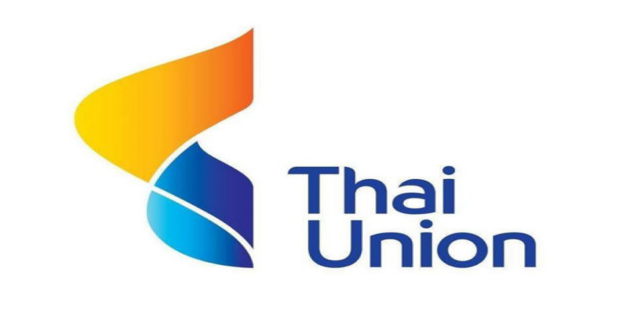Market Size of united states frozen and canned seafood Industry
|
|
Study Period | 2017 - 2029 |
|
|
Market Size (2024) | USD 18.33 Billion |
|
|
Market Size (2029) | USD 19.55 Billion |
|
|
Largest Share by Type | Fish |
|
|
CAGR (2024 - 2029) | 1.30 % |
|
|
Fastest Growing by Type | Shrimp |
Major Players |
||

|
||
|
*Disclaimer: Major Players sorted in no particular order |
US Frozen and Canned Seafood Market Analysis
The United States Frozen and Canned Seafood Market size is estimated at 18.33 billion USD in 2024, and is expected to reach 19.55 billion USD by 2029, growing at a CAGR of 1.30% during the forecast period (2024-2029).
18.33 Billion
Market Size in 2024 (USD)
19.55 Billion
Market Size in 2029 (USD)
5.02 %
CAGR (2017-2023)
1.30 %
CAGR (2024-2029)
Largest Segment by Distribution Channel
54.86 %
value share, On-Trade, 2023
Restaurants prefer fish, clams, and other delicacies due to their consistent pricing and great value. Seafood is used as an ingredient in pasta, rice, wraps, and soups.
Fastest-growing Segment by Distribution Channel
1.56 %
Projected CAGR, Off-Trade, 2024-2029
The rising preference to buy essential groceries online during the pandemic drove the channel. The growth may be assisted by better digital marketing.
Leading Market Player
7.16 %
market share, Sysco Corporation, 2022

The company offers a diverse range of seafood products, including lobster, octopus, salmon, tuna, shrimp, cod, and mussels, along with many varieties of calamari.
Second Leading Market Player
4.30 %
market share, Thai Union Group PCL, 2022

Chicken of the Sea and Genova are two major brands offering canned seafood products, such as tuna, salmon, and crab. The latter consists of more premium products.
Third Leading Market Player
2.14 %
market share, High Liner Foods Inc., 2022

With a wide product portfolio, High Liner Foods offers various processed and unprocessed seafood of species such as Wild Alaska Salmon, Salmon Tilapia, Cod etc.
The rising demand for convenience foods is driving the market growth
- The frozen/canned fish segment dominated the market with an increase in the Y-o-Y growth rate of 8.64% from 2020 to 2022. The primary factors influencing the market for frozen fish in the United States are the rising demand for convenience meals like ready-to-eat and ready-to-cook foods and the increasing consumer awareness about health issues. These products shorten the cooking time for those with busy schedules and stressful lifestyles. Fresh, chilled, and live seafood became more difficult to obtain. Consumer preferences resulted in a shift that favored shelf-stable seafood products, such as canned and frozen items. Frozen seafood sales reportedly increased by 7.36% in 2022 from the pandemic.
- Frozen shrimp is the fastest-growing segment of the frozen/canned seafood market in the United States, which is expected to register a CAGR value of 1.54% during the forecast period. The sales of frozen shrimp in the United States also increased by 2.17% in 2022 compared to 2021. The US dietary guidelines recommend eating at least 8 ounces of seafood per week, of which consumption of frozen/canned shrimp products was one of the major sources of dietary seafood protein. Also, the prices of frozen shrimp are at a constant level compared to other seafood.
- In 2021, the increase in the sales of frozen fish across the United States was attributed to the added advantage of long shelf life and year-round availability across various market channels, with increased consumer health awareness fueled by frozen seafood sales volume and value. An average American consumed less than 3.5 pounds of canned fish in 2022. In 2022, consumer spending on frozen seafood in the United States accounted for USD 8 billion, while shrimp represented 48% of the category’s sales.
United States Frozen and Canned Seafood Industry Segmentation US Frozen and Canned Seafood Industry Segmentation
Fish, Shrimp are covered as segments by Type. Off-Trade, On-Trade are covered as segments by Distribution Channel.
- The frozen/canned fish segment dominated the market with an increase in the Y-o-Y growth rate of 8.64% from 2020 to 2022. The primary factors influencing the market for frozen fish in the United States are the rising demand for convenience meals like ready-to-eat and ready-to-cook foods and the increasing consumer awareness about health issues. These products shorten the cooking time for those with busy schedules and stressful lifestyles. Fresh, chilled, and live seafood became more difficult to obtain. Consumer preferences resulted in a shift that favored shelf-stable seafood products, such as canned and frozen items. Frozen seafood sales reportedly increased by 7.36% in 2022 from the pandemic.
- Frozen shrimp is the fastest-growing segment of the frozen/canned seafood market in the United States, which is expected to register a CAGR value of 1.54% during the forecast period. The sales of frozen shrimp in the United States also increased by 2.17% in 2022 compared to 2021. The US dietary guidelines recommend eating at least 8 ounces of seafood per week, of which consumption of frozen/canned shrimp products was one of the major sources of dietary seafood protein. Also, the prices of frozen shrimp are at a constant level compared to other seafood.
- In 2021, the increase in the sales of frozen fish across the United States was attributed to the added advantage of long shelf life and year-round availability across various market channels, with increased consumer health awareness fueled by frozen seafood sales volume and value. An average American consumed less than 3.5 pounds of canned fish in 2022. In 2022, consumer spending on frozen seafood in the United States accounted for USD 8 billion, while shrimp represented 48% of the category’s sales.
| Type | |
| Fish | |
| Shrimp | |
| Other Seafood |
| Distribution Channel | ||||||
| ||||||
| On-Trade |
United States Frozen and Canned Seafood Market Size Summary
The United States frozen and canned seafood market is experiencing a steady growth trajectory, driven by increasing consumer demand for convenience and health-conscious meal options. The market is characterized by a significant shift towards shelf-stable products like frozen and canned seafood, as fresh and live seafood become less accessible. This shift is further supported by the rising popularity of frozen shrimp, which is the fastest-growing segment within the market. The US dietary guidelines also encourage seafood consumption, with frozen and canned shrimp being a major source of dietary protein. The market's expansion is bolstered by government support and investments aimed at enhancing local seafood production and addressing challenges such as overfishing and labor shortages.
The market landscape is fragmented, with key players like High Liner Foods Inc., Mowi ASA, Sysco Corporation, Thai Union Group PCL, and Trident Seafood Corporation holding a significant share. The US is a major importer of seafood, with urbanization and a growing middle class fueling demand. Despite challenges in capture fisheries, the value of aquaculture continues to rise, contributing to the market's overall growth. The market's dynamics are influenced by factors such as stable fish prices, increasing costs for inputs, and strong global demand for seafood products. Recent acquisitions and strategic investments by major companies further highlight the market's potential for expansion and innovation.
United States Frozen and Canned Seafood Market Size - Table of Contents
-
1. MARKET SEGMENTATION (includes market size in Value in USD, Forecasts up to 2029 and analysis of growth prospects)
-
1.1 Type
-
1.1.1 Fish
-
1.1.2 Shrimp
-
1.1.3 Other Seafood
-
-
1.2 Distribution Channel
-
1.2.1 Off-Trade
-
1.2.1.1 Convenience Stores
-
1.2.1.2 Online Channel
-
1.2.1.3 Supermarkets and Hypermarkets
-
1.2.1.4 Others
-
-
1.2.2 On-Trade
-
-
United States Frozen and Canned Seafood Market Size FAQs
How big is the United States Frozen and Canned Seafood Market?
The United States Frozen and Canned Seafood Market size is expected to reach USD 18.33 billion in 2024 and grow at a CAGR of 1.30% to reach USD 19.55 billion by 2029.
What is the current United States Frozen and Canned Seafood Market size?
In 2024, the United States Frozen and Canned Seafood Market size is expected to reach USD 18.33 billion.

